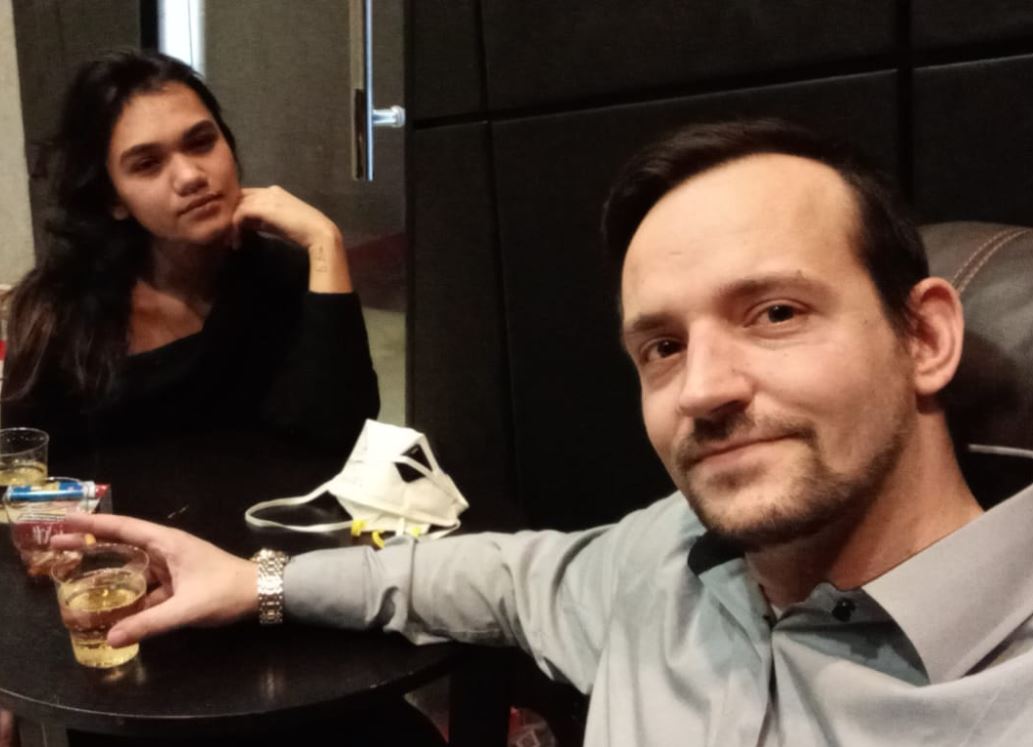Thailand celebrates: Discover the fascinating festivals of Songkran and Loy Krathong!
Discover the cultural diversity of Thailand through traditional festivals such as Songkran and Loy Krathong, their meaning and customs.
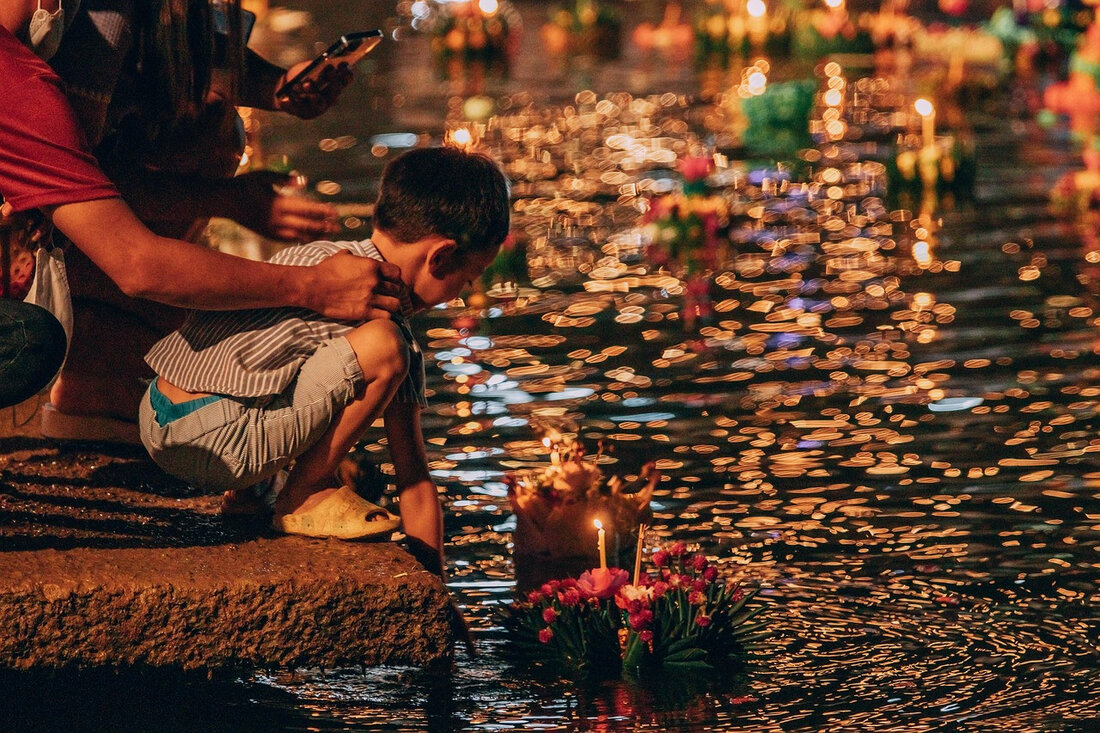
Thailand celebrates: Discover the fascinating festivals of Songkran and Loy Krathong!
Thailand, the land of smiles, is known not only for its breathtaking landscapes and warm hospitality, but also for its rich cultural diversity, reflected in a variety of traditional festivals. These celebrations are deeply rooted in the country's history and spiritual beliefs and offer a unique insight into the soul of Thai society. From colorful processions to quiet, contemplative rituals, Thailand's festivals combine faith, community and joy in an unparalleled way. They mark important turning points in the annual cycle, honor Buddhist traditions or celebrate historical events and in the process connect generations. This article takes you into the world of these special occasions, sheds light on their origins and shows why for the people of Thailand they are much more than just holidays - they are an expression of identity and solidarity.
Introduction to Thai culture
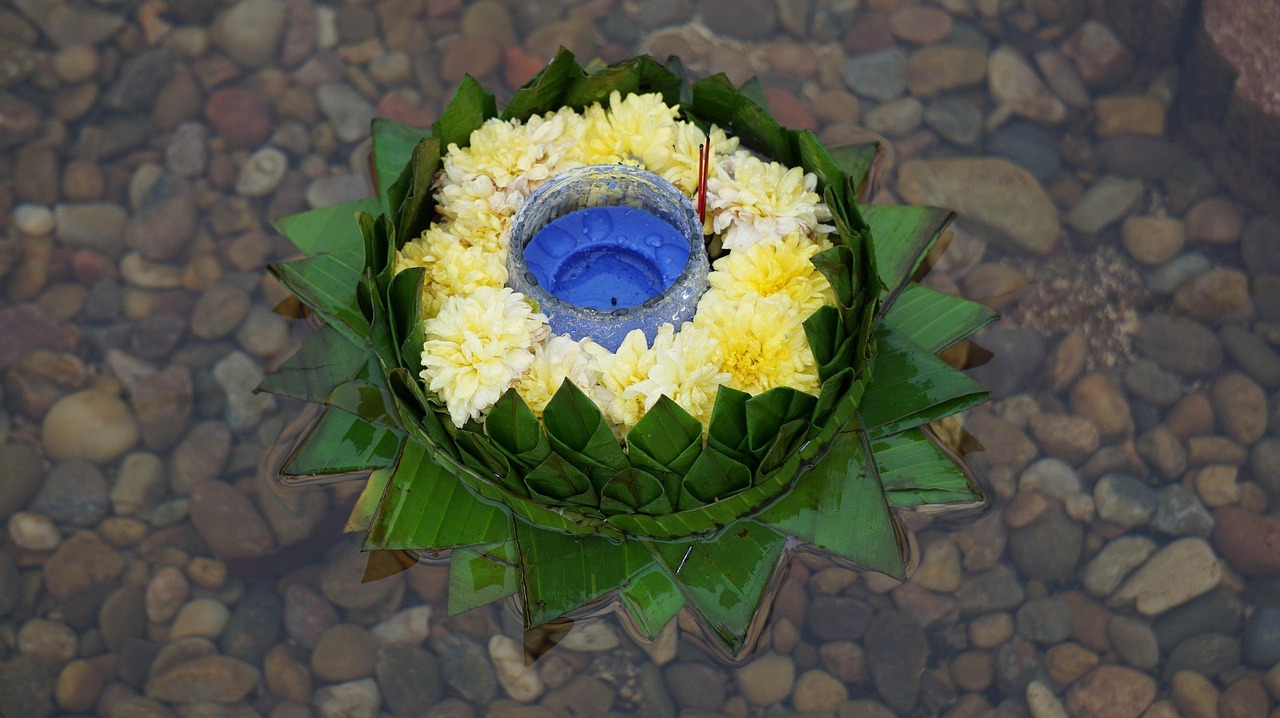
Imagine entering a temple courtyard in Thailand, surrounded by golden statues and the scent of incense as the murmur of Buddhist prayers fills the air. Here, in the midst of this spiritual atmosphere, we begin our journey into the cultural roots that shape the country's traditional festivals. Theravada Buddhism, which inspires over 90 percent of the population, is at the heart of many celebrations. With over 40,000 temples in the country, these sacred sites are often the focus of ceremonies that reflect both religious devotion and community values. But Thailand's cultural landscape is much more than just a religious facet - it is a mosaic of local customs, animistic beliefs and historical influences formed over centuries of interaction with Indian, Chinese and Khmer cultures.
This diversity is reflected in the way festivals strengthen the social fabric. Respect and hierarchy, deeply rooted in the Thai way of life, play a central role in many rituals. A simple example is the traditional greeting called "Wai", in which the hands are put together and a slight bow is made - a sign of respect that is particularly given to higher ranks and older people on festive occasions. As described in an extensive report on Thai culture, this gesture is ubiquitous in rural areas, while in urban centers such as Bangkok a handshake is also accepted ( Fascination with Southeast Asia ). Such nuances illustrate how tradition and modernity coexist and shape celebrations.
Another defining aspect is the emphasis on humility and the pursuit of happiness, values that are deeply rooted in the Thai mentality. Many people, especially in small villages, lead simple lives and find contentment in community and spiritual practices. Festivals provide opportunities to celebrate these values, whether through preparing food together or sharing merit in the Buddhist sense. At the same time, globalization has left its mark - in cities like Bangkok, which is a vibrant center for trends and business with over 16 million inhabitants, traditional customs mix with modern influences. Nevertheless, the essence of the festivals remains, often visible in the world-famous Thai cuisine, which plays a central role on many occasions.
Historically, Thailand's strategic location as a trading center has absorbed cultural elements from around the world, particularly during the heyday of the Kingdom of Ayutthaya. These interactions with Portuguese, Persian and Japanese influences have enriched not only art and architecture but also festive traditions. A look at UNESCO World Heritage sites like Ban Chiang or the artistic ceramics from the Sukhothai era shows the deep cultural history that plays a role in many celebrations ( Wikipedia: Culture of Thailand ). From traditional dances like Khon, often performed at ceremonies, to classical music with unique instruments, all of these elements are incorporated into the design of festivals and tell stories of bygone eras.
In addition to the historical dimension, social etiquette also shapes the experience of celebrations. Avoiding conflict and “saving face” is an unwritten rule that becomes especially important during festive gatherings. A smile, often understood as a universal language of kindness, serves as a bridge in communication and reflects the warmth that permeates such occasions. Likewise, rituals such as weddings or funerals, which are often celebrated over days, are permeated by Buddhist and folkloric elements that underline respect for life and death.
The cultural aspects that shape Thailand's festivals are therefore a living web of beliefs, history and social values. They reflect how closely people are connected to their past while facing the challenges of the modern world. This balance between preservation and change makes every celebration a unique experience that goes far beyond mere rituals.
Important traditional festivals in Thailand
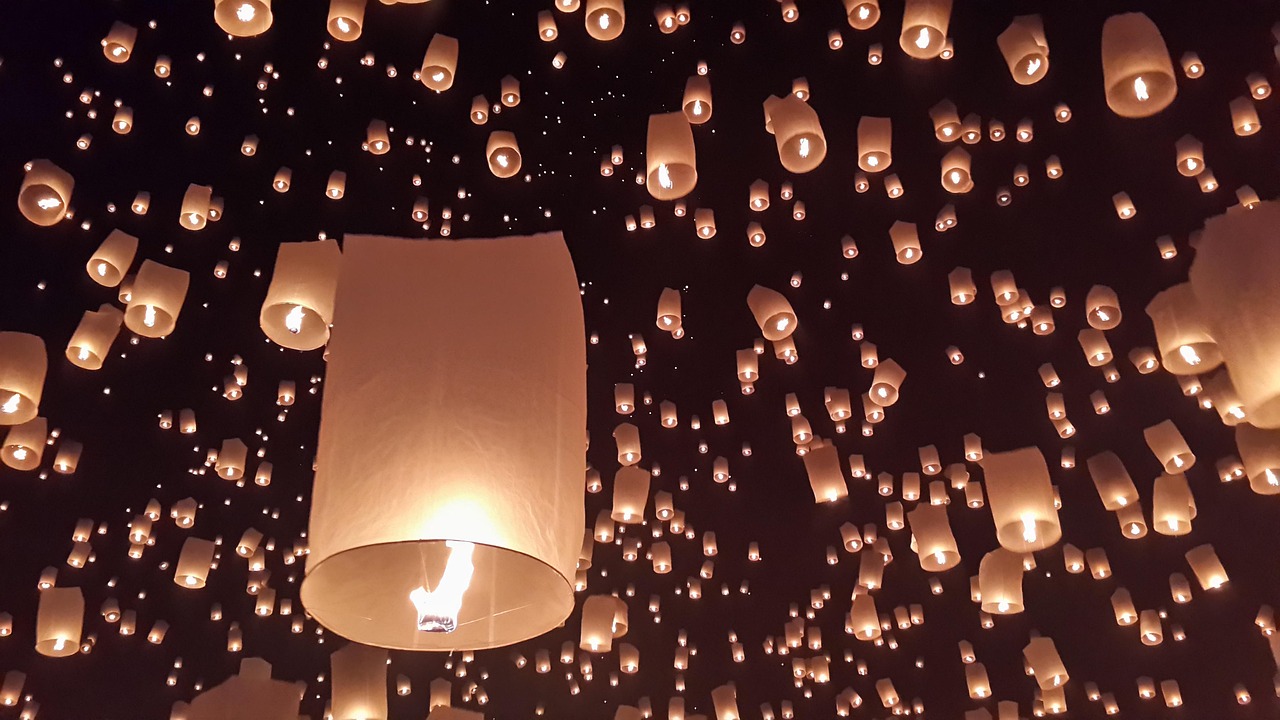
A splash of water hits your face as laughter and music fill the streets - welcome to the festive world of Thailand, where the year is filled with colorful and profound celebrations. Across the country, these occasions mark significant moments in the calendar, often closely linked to religious beliefs and seasonal turning points. Each festival tells its own story, be it through lively water fights or the gentle shimmer of lanterns in the night sky, and invites you to discover the soul of Thai culture.
April begins with the famous Songkran, the Thai New Year, which is celebrated from April 13th to 15th. These days are marked by purification and respect as family members pour water on the hands of elders to symbolically wash away sins. On the streets, the ritual turns into exuberant water fights where no one stays dry - a happy expression of community and new beginnings. Especially in cities like Chiang Mai, Phuket or Bangkok, the celebration reaches its climax with colorful processions and music. If you would like to find out more about the lively atmosphere, you will find detailed impressions here Thailand Magazine, where the meaning and process of such celebrations are clearly described.
A few weeks later, in May, the deafening sound of home-made rockets rang out in the Yasothon region. At Bun Bang Fai, the rocket festival, people ask the rain god for a fruitful rainy season. Over three days, huge, artfully crafted rockets rise into the sky, accompanied by folk dances, parades and traditional music. The competition for the tallest or most beautiful rocket brings not only excitement but also prize money for the winners, making the event a highlight in the rural northeast.
Between March and July, depending on the lunar calendar, Loei Province is transformed into a spooky spectacle with the Phi Ta Khon, the Ghost Festival. During the three-day celebration, part of the Buddhist Bun Luang, locals parade through the streets of Dan Sai in handmade costumes and masks made from recycled materials. These colorful parades, coupled with dances and competitions, honor ancient legends and bring the community together while captivating visitors.
In autumn, usually between September and October, the Vegetarian Festival takes place in Phuket, which has its roots in Chinese Taoist beliefs. During the ninth lunar month, participants abstain from meat to purify the body and mind. Impressive processions between Chinese shrines, accompanied by rituals such as coal walking or piercings, testify to devotion and spiritual strength. At the same time, numerous vegetarian dishes offered during this time attract gourmets from all over the world.
When the full moon of the twelfth month of the Thai lunar calendar illuminates the sky, often in November, one of the most picturesque events begins: Loi Krathong. Across the country, people float small boats made of banana leaves, called krathongs, with candles and flowers on rivers and lakes. This ritual symbolizes letting go of worries and asking for forgiveness while emphasizing the connection to nature. Especially in Chiang Mai, the festival is complemented by Yee Peng, during which thousands of lanterns rise into the night sky and create an unforgettable sea of lights. Offers further insights into this magical tradition Ling app, where the symbolic depth of such customs is vividly conveyed.
In addition to these highlights, there are also significant Buddhist celebrations such as Magha Puja, Visakha Bucha and Asanha Bucha, each honoring important events in the life of Buddha. They fall on different months, often depending on the lunar calendar, and involve silent ceremonies in temples that focus on candle processions and meditation. Likewise, the Chinese New Year, which is celebrated over three days by the large Chinese community, becomes a cultural highlight with colorful parades and special dishes.
The diversity of celebratory occasions in Thailand reflects the rich cultural and religious landscape. Every event, whether loud and lively or quiet and contemplative, helps shape the rhythm of the year and connect people with each other.
Songkran – The Thai New Year celebration
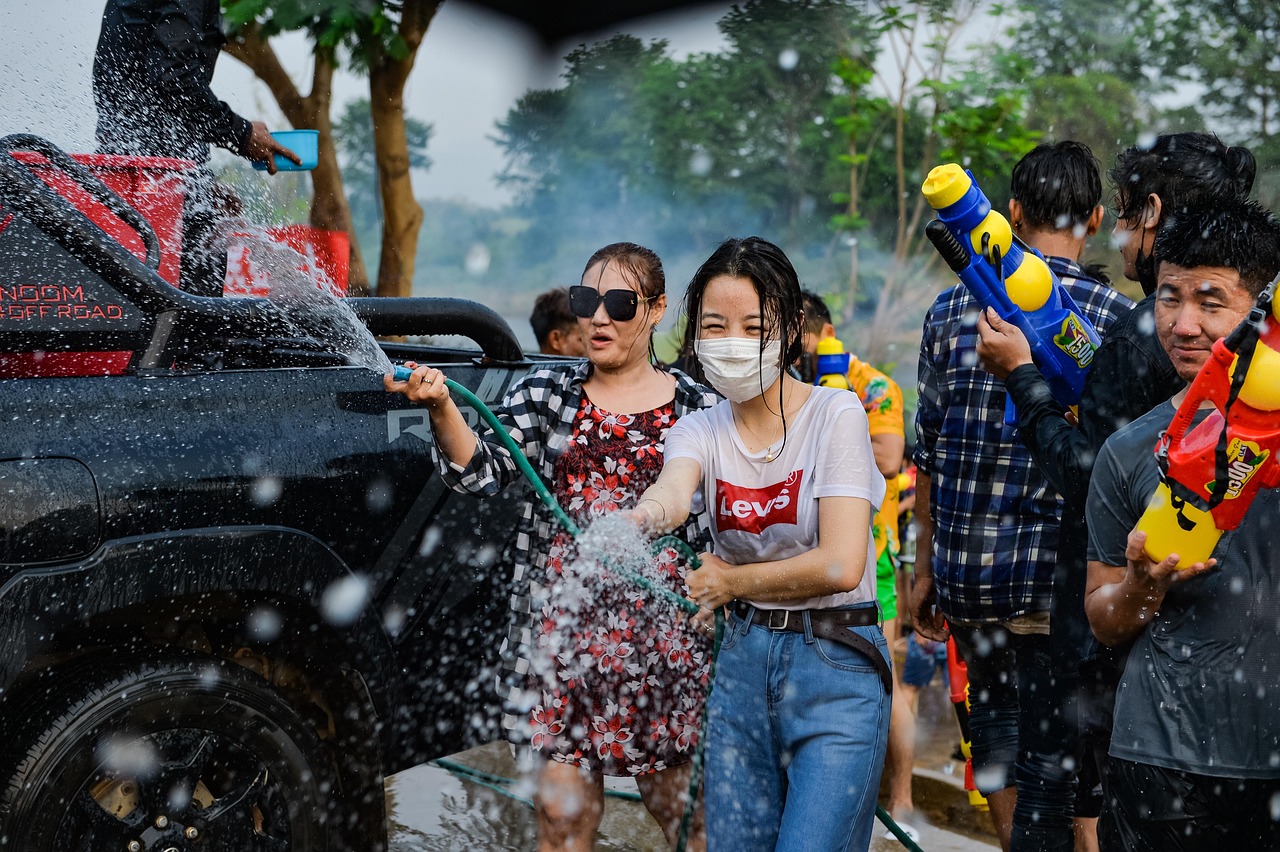
Hear the sound of water echoing through the streets and feel the magic of lanterns lighting up the sky - celebrations in Thailand are a feast for all the senses. Behind every ritual and custom there is a deeper meaning that shapes people's lives and reflects their values. Let's delve into the living traditions of some of the most famous festivals and discover what stories they tell.
Let's start with Songkran, the Thai New Year, which traditionally starts on April 13th and extends over the following two days. This occasion not only marks the beginning of a new year in Theravada Buddhism, but also represents purification and renewal. Families pour scented water over the hands of their elders to show respect and seek their blessings, while in temples Buddha statues are sprinkled with water to symbolize spiritual renewal. On the streets, this custom turns into one of the largest water fights in the world, with young and old attacking each other with water guns and buckets - an expression of joy and community, especially in hot April. In addition to the lively activities, offering food to monks and wearing colorful clothing are also customs that are said to collect merit and bring good luck. A fascinating report on this globally unique tradition can be found at BBC Travel, where the cultural depth and modern exuberance of Songkran are vividly described.
Loi Krathong, the festival of lights that is celebrated in November under the full moon, sets a completely different tone. People gather along rivers and lakes to float small boats made of banana leaves, decorated with candles, flowers and sometimes a coin. This act of letting go represents the release of worries, resentments and negative energies, while asking for forgiveness and a happy new year is the focus. In Chiang Mai, the festival is complemented by Yee Peng, during which thousands of sky lanterns rise and transform the sky into a sparkling sea. These customs emphasize the close connection to nature and spiritual purification that play a central role in Thai culture, and invite you to pause and reflect on your own life.
Another fascinating event is the Phuket Vegetarian Festival, which takes place in the ninth lunar month, usually September or October. Inspired by Chinese Taoist beliefs, participants abstain from meat for nine days to promote health and spiritual purity. Impressive processions between shrines, in which believers perform extreme acts of self-mortification such as piercings or walking over hot coals, demonstrate deep devotion. These rituals are intended to appease the gods and provide protection, while the abundance of vegetarian food nourishes the community and attracts visitors. The custom highlights Thailand's cultural diversity and the importance of sacrifice and discipline.
In the northeast of the country, in Yasothon, the rainy season begins with Bun Bang Fai in May. Over three days, communities build and fire giant rockets that shoot into the sky to appeal to the rain god Phraya Thaen for abundant rainfall for crops. Accompanied by colorful parades, traditional dances and music, this competition promotes cohesion and creativity among the villagers. The explosions and communal celebrations reflect the desire for prosperity and show how closely people are connected to the cycles of nature.
Phi Ta Khon, the ghost festival in Loei province, which is celebrated between March and July, brings a touch of mysticism. During the three-day celebration, part of Bun Luang, locals dress up as ghosts with elaborate masks and costumes made from recycled materials and parade through the streets. This custom, based on ancient legends, is intended to celebrate the return of Buddha from heaven and protect the community from harm. The lively dances and competitions that accompany the festival create an atmosphere of joy and togetherness while emphasizing the spiritual dimension of life.
These rituals and customs, which vary from region to region, reveal the complexity of Thai culture. They connect people with their history, their gods and nature, while providing space for community and personal reflection.
Loy Krathong – The Festival of Lanterns
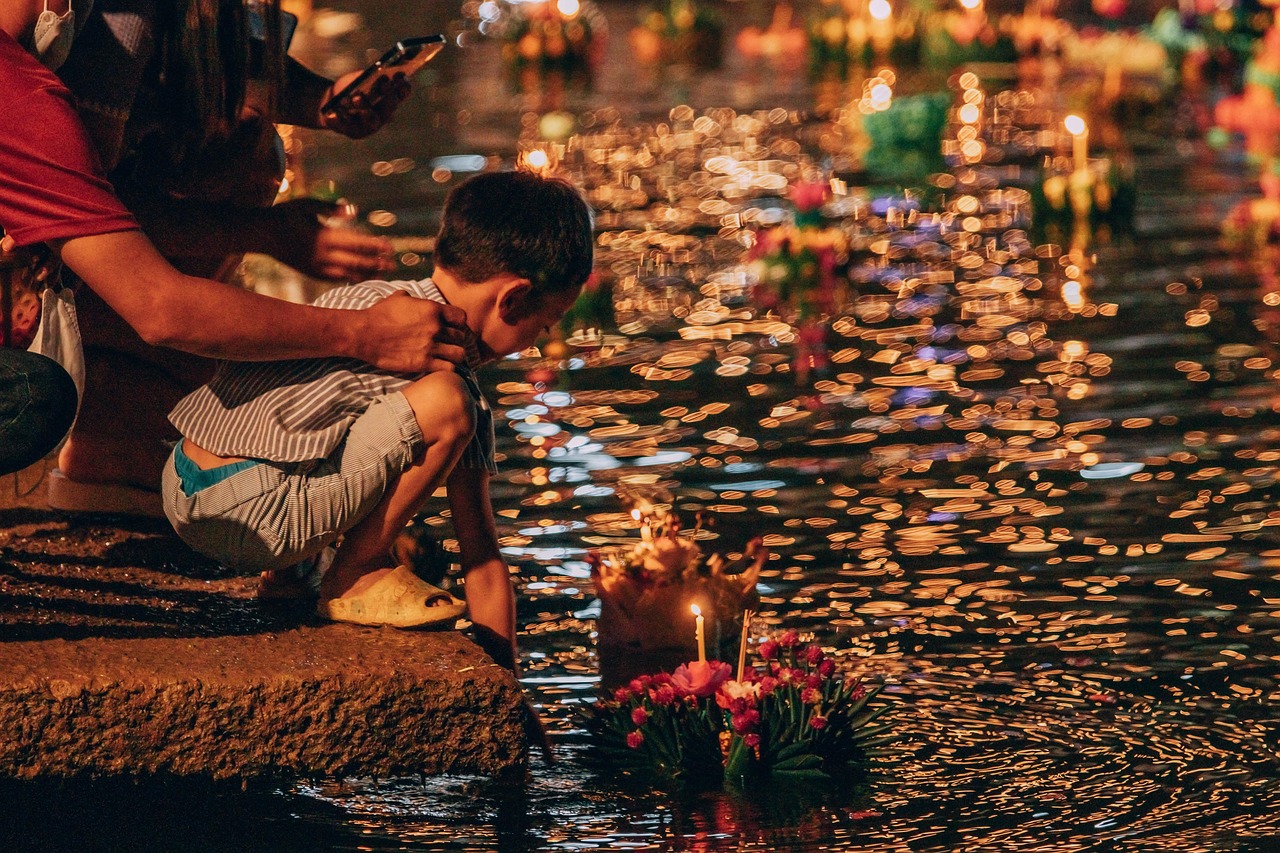
On the banks of a quiet river, under the silver glow of the full moon, people gather with small, glowing boats in their hands - an image that captures the essence of Loi Krathong, one of Thailand's most enchanting festivals. This annual celebration, which takes place on the full moon of the twelfth month of the Thai lunar calendar - November 15 in 2024 - invites you to pause and connect with nature and your soul. Let's delve into the traditions, symbolism and celebrations of this special occasion that radiates far beyond the borders of Thailand.
The name “Loi Krathong” comes from the Thai words “loi” meaning “swimming” and “krathong” meaning “ritual vessel”. The focus is on crafting and floating these small, artistic boats, which are traditionally made from banana leaves, a piece of banana trunk or spider lilies. Decorated with candles, incense, flowers and sometimes a small coin as an offering, they carry people's hopes and wishes. When they float on rivers, lakes or canals, they symbolize letting go of negative thoughts, worries and mistakes of the past year. At the same time, the ritual serves as a thank you to Khongkha, the goddess of water, for her life-giving power and as a request for forgiveness for polluting the waters.
The roots of this tradition date back to India, where similar rituals to worship water spirits were practiced, and reflect a fusion of Hindu and Buddhist influences that have existed in Thailand for centuries. Historical accounts, such as that of French envoy Simon de la Loubère in 1687, attest to the long history of the festival, which is often associated with the Sukhothai Kingdom and the legend of Nopphamat, a lady-in-waiting who is said to have designed the first krathong. Today the custom has evolved, using modern materials such as bread or even Styrofoam, although the latter is increasingly banned due to environmental concerns. Biodegradable alternatives are being promoted to protect waterways, as evidenced by the massive clean-up effort after the festival - over 660,000 krathongs were recovered from the water in Bangkok in 2016.
In northern Thailand, particularly in Chiang Mai, Loi Krathong merges with the Yi Peng Festival, during which thousands of sky lanterns, called khom loi, rise into the night sky. These glowing dots, often carrying wishes and prayers, enhance the magical atmosphere and represent letting go of misfortune and striving for a better life. However, for safety reasons, there are restrictions on lanterns and fireworks in many regions due to the risk of fire or accidents; Violations can result in heavy fines or even imprisonment. Nevertheless, the sight of a sky lit by lanterns remains an unforgettable experience that underlines the spiritual dimension of the festival.
The celebrations themselves often extend over several days, especially in cities like Sukhothai, where the festival is considered a cultural highlight. In 2025, the event there attracted over 750,000 tourists and generated revenue of around 800 million baht, according to the Bangkok Post reported. In addition to the krathong floating, parades, traditional dances and beauty pageants are among the highlights that bring the community together and immerse visitors in Thai culture. Light processions are also organized in some regions, emphasizing respect for Buddha and the country's spiritual values.
Beyond the external customs, Loi Krathong carries a deeper message: it reminds us of the importance of water as a source of life and encourages us to respect nature. At the same time, it offers a moment of reflection in which personal burdens are shed and new hopes are forged. This combination of gratitude, purification and community makes the festival a unique expression of Thai values, which is also celebrated in similar forms in neighboring countries such as Laos, Cambodia and Myanmar.
The gentle current that carries a krathong and the flickering of the candle reflected in the water are more than just a beautiful sight - they speak of a people living in harmony with their environment and their spirituality.
Visakha Bucha – The Day of Enlightenment
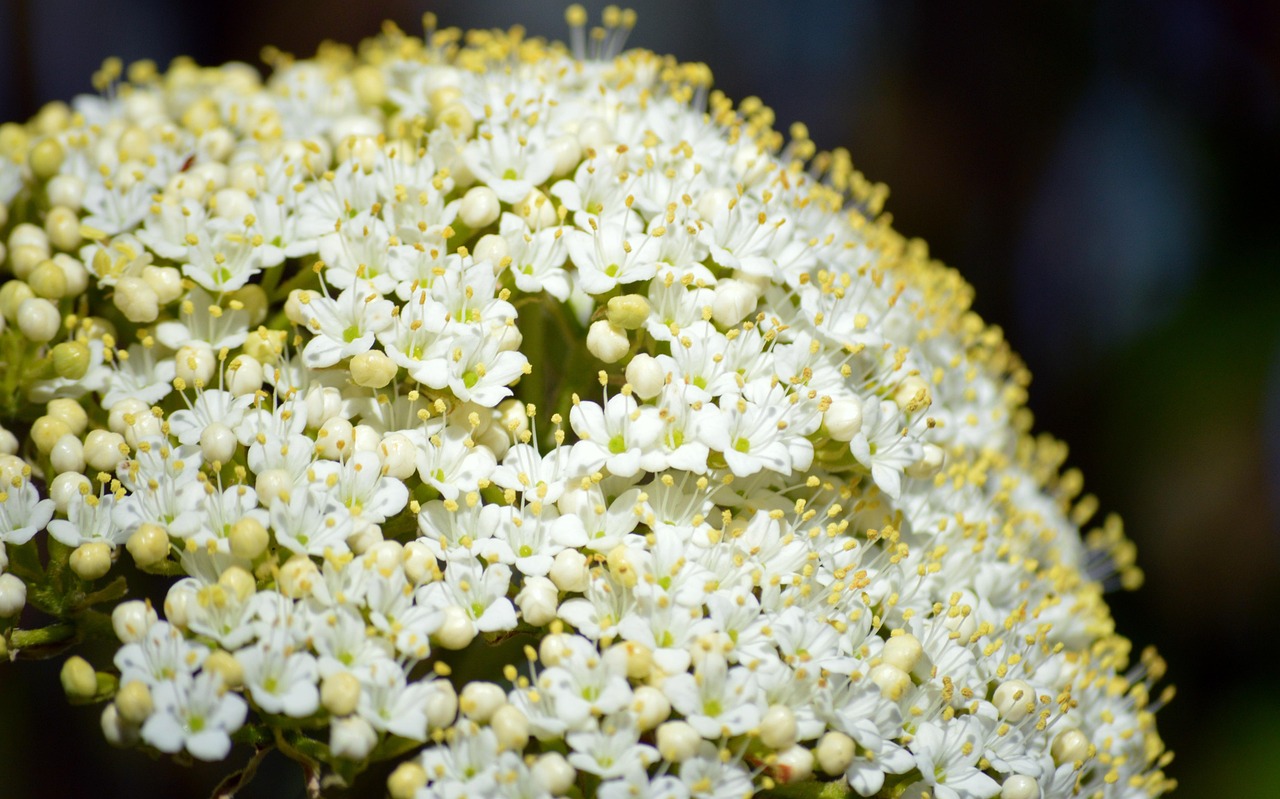
Under the golden roof of a temple, in the soft glow of flickering candles, believers gather in quiet devotion to commemorate the teachings of a man who showed the path to enlightenment over two thousand years ago. In Thailand, where Theravada Buddhism shapes spiritual life, festivals in honor of Buddha play a central role throughout the year. Deeply rooted in the principles of compassion, mindfulness and wisdom, these special occasions provide space for reflection and community. Let's explore the meaning and celebrations of these holy days that touch the heart of Thai culture.
One of the most important holidays is Visakha Bucha, which is celebrated on the full moon day of the sixth lunar month, usually in May. This day brings together three crucial moments in the life of Buddha: his birth, his enlightenment at the age of 35 and his death at the age of 80. As a public holiday in Thailand, it represents a time of inner contemplation when many shops close and the sale of alcohol is often restricted. Worshipers flock to temples like Wat Phra That Doi Suthep in Chiang Mai to collect merit by preparing food for monks, listening to sermons and taking part in meditation. Particularly impressive is the tradition of “wian tian,” in which candle processions take place around temples to honor the teachings of Buddha. In Chiang Mai, thousands, often nearly 10,000 people, hike the 11 kilometers up to Doi Suthep Temple at night or at sunrise to start the day in spiritual connection. A detailed insight into these profound rituals can be found at Chiang Mai Travel Hub, where the meaning and process of Visakha Bucha are vividly described.
Another important occasion is Magha Puja, which is celebrated on the full moon of the third lunar month, usually in February or March. This day commemorates a spontaneous meeting of 1,250 of Buddha's enlightened disciples who gathered without prior arrangement to hear his teachings. The celebrations focus on the principles of Buddhism: avoiding injustice, doing good and purifying the mind. In temples across the country, people gather, often wearing white clothing as a sign of purity, to take part in ceremonies. They make simple offerings such as flowers, candles and incense and take part in processions, walking around the temple three times to honor the three jewels of Buddhism - Buddha, Dharma and Sangha. These rituals emphasize the importance of community and moral discipline.
Asanha Bucha, celebrated on the full moon of the eighth lunar month, usually in July, commemorates the Buddha's first sermon, which he gave to his first five disciples after his enlightenment. This teaching, known as the Four Noble Truths, laid the foundation for the Buddhist path. On this day, which is also a public holiday, many Thais devote themselves to reflecting on these fundamental principles. Temple visits are the focus, where believers take part in meditations and sermons to deepen their understanding of the Dharma. Water or sweet tea is often poured over a statue of Buddha, a symbolic act of cleansing bad karma. Monks recite ancient verses to invoke peace and happiness for the land and its people, highlighting the spiritual connection between individual and community.
These Buddhist holidays are more than just days of remembrance - they serve as a reminder of the timeless values that Buddha taught, such as compassion, non-violence and mindfulness. Many believers abstain from meat and other worldly pleasures on these days in order to devote themselves entirely to spiritual practice. In some regions, animals are also released, a practice of “life release” that symbolizes mercy and appreciation of all life. Such customs reflect the deep respect that Thai society has for the Buddha's teachings and provide a counterpoint to the country's often louder, secular festivals.
The quiet ceremonies, the murmuring of prayers and the warm light of the candles in the temples create an atmosphere that invites inner contemplation. They show how closely the people of Thailand are connected to their spiritual tradition, and how these festivals not only celebrate historical events, but also provide a living path to personal and communal enlightenment.
ChakriDay – Celebration of the Thai Monarchy
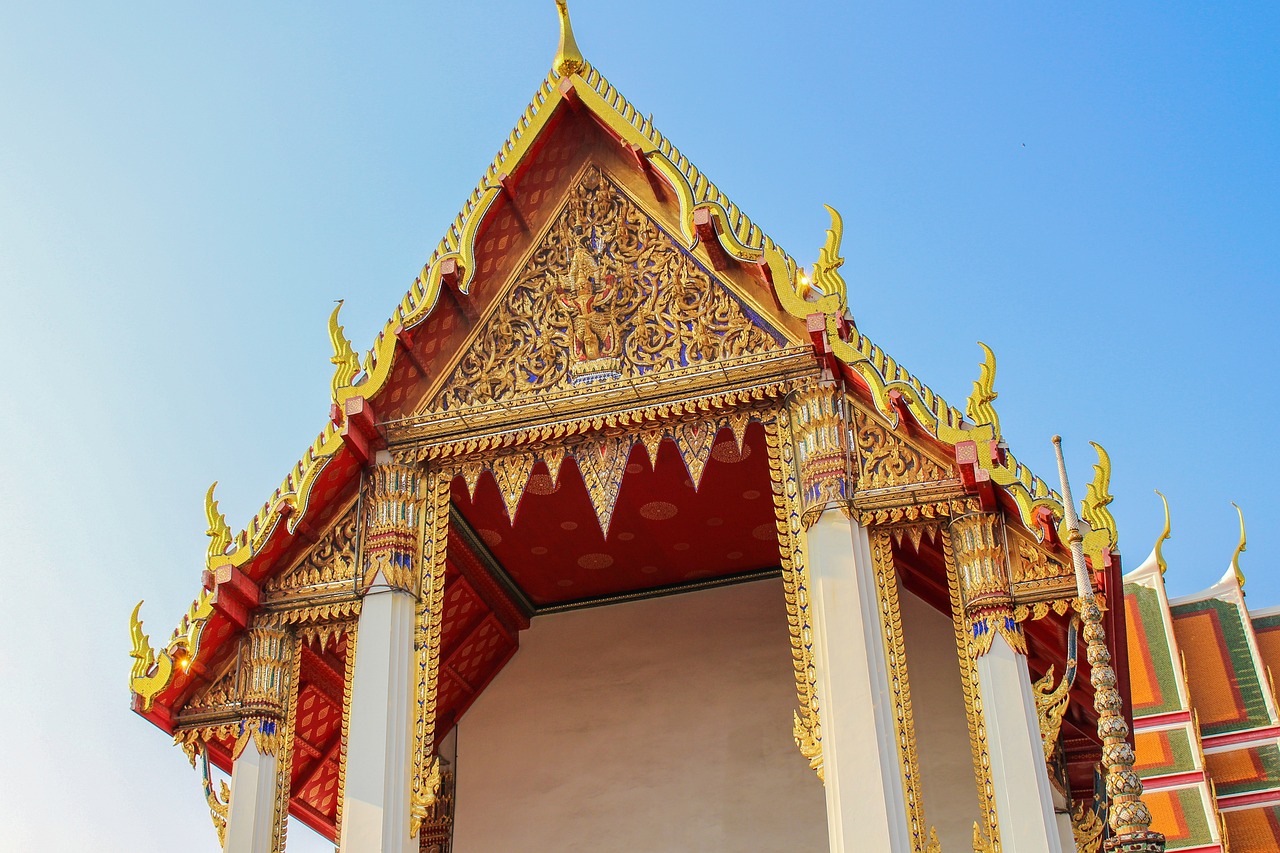
Imagine a time when the New Year began not with fireworks and the changing of the calendar, but with the gentle lapping of water and the laughter of community - a time when Songkran, the Thai New Year, marked the beginning of a new cycle. This festival, celebrated today in April, carries with it a rich history that goes deep into Thailand's cultural and spiritual roots. It's more than just a happy occasion; it embodies the essence of renewal and cohesion for an entire nation. Let's explore the historical background and meaning of this holiday that touches the heart of Thai identity.
The origins of Songkran go back a long way and are closely linked to Theravada Buddhism and ancient Hindu traditions. The name itself comes from Sanskrit and means “movement” or “transition,” in reference to the astrological shift of the sun from the constellation Pisces to Aries, an event that traditionally marked the turn of the year. Songkran was officially considered the New Year's celebration in Thailand until 1888, when the Western calendar year was adopted on January 1st. Nevertheless, Songkran remained in the cultural consciousness as a true beginning of the new year, an echo of the ancient lunisolar calendars used in many Southeast Asian and South Asian cultures. Historical accounts, such as those found in comprehensive sources, show that celebrations were documented as early as the 17th century, often accompanied by royal ceremonies and astrological predictions for the country's future ( Wikipedia: Songkran ).
In ancient times, Songkran was a festival of purification and respect that focused on family and spiritual values. People cleaned their homes to leave the old behind and poured water over Buddha statues in temples to collect merit and symbolize spiritual renewal. Likewise, water was poured over the hands of elders, a ritual that expressed reverence and a request for blessings. These practices reflect the festival's deep roots in Buddhist principles that emphasize purity and compassion. Over time, this developed into the well-known tradition of water fights today, in which entire communities are doused with water in the streets - a playful expression of joy that still preserves the idea of cleansing.
For the Thai nation, Songkran has a meaning that goes far beyond a mere holiday. It marks a collective new beginning, an opportunity to leave old conflicts and worries behind and look into the future with fresh courage. In a society strongly focused on community and harmony, the festival strengthens social cohesion by bringing people of all ages and backgrounds together. Whether in the busy streets of Bangkok, where major arteries are closed for the celebrations, or in the quiet villages of the north, where fireworks are intended to ward off misfortune, Songkran creates a sense of unity that shapes the country's cultural identity.
Historically, Songkran was also a moment when the bond between the people and rulers was strengthened. Astrologers, often in the royal court, used the constellations during the festival to make predictions about harvests, economics and prosperity, underscoring the importance of the transition for the entire kingdom. This tradition shows how closely the festival was and remains linked to the well-being of the nation, even if modern celebrations are often less formal. Today, Songkran also attracts visitors from all over the world who take part in the exuberant water fights in cities such as Chiang Mai and Pattaya, which underlines the global recognition of the festival - in 2024 it was even recognized as an intangible cultural heritage of humanity by UNESCO.
The importance of Songkran for Thailand also lies in its ability to combine tradition and modernity. While the spiritual and family rituals remain the focus, the festival has become a symbol of joy of life and cultural pride. It is a reminder of the importance of honoring the past while looking forward to the future, and provides a space where the Thai soul - characterized by warmth and community - shines in full bloom.
Vegetarian Festival – A celebration of purity
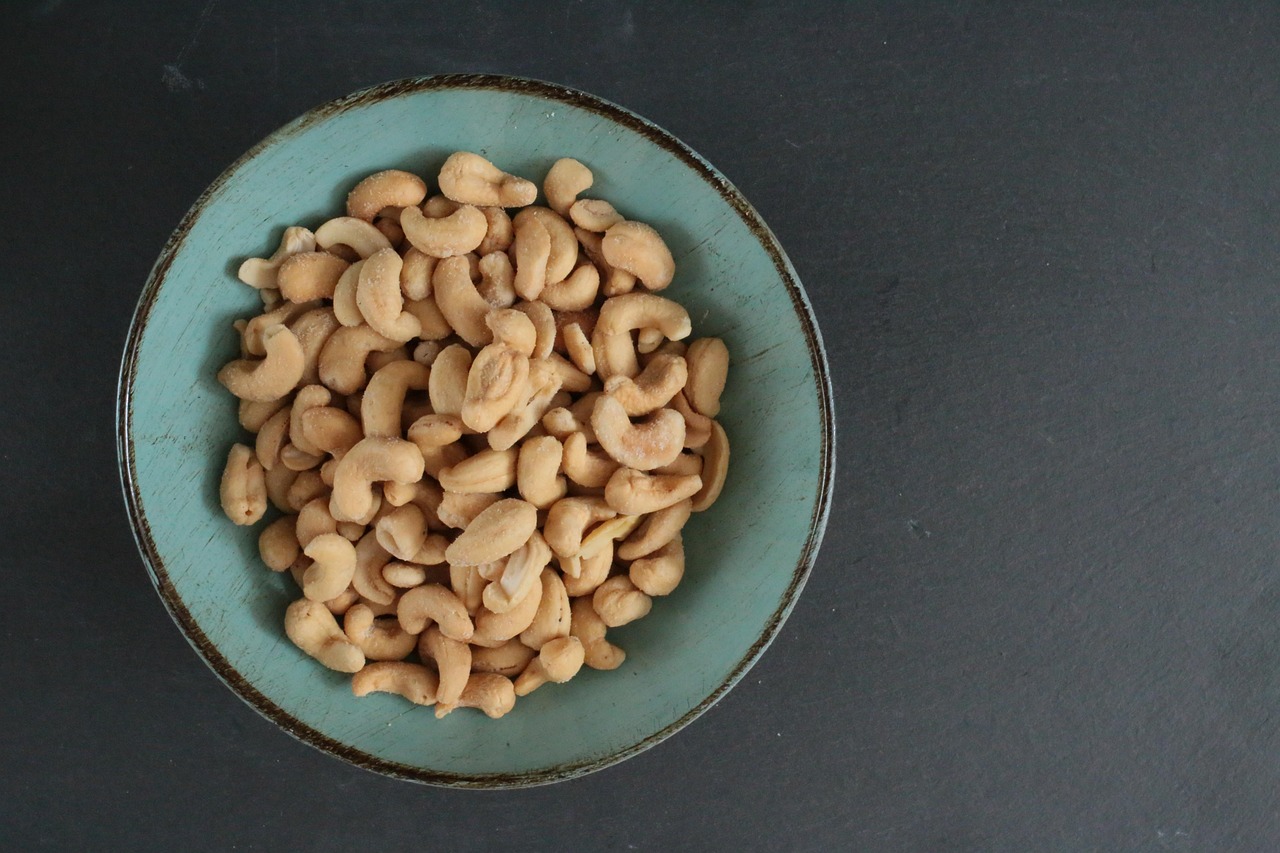
A hint of incense fills the air as the streets of Phuket come alive with colorful processions and the sound of fireworks - the Vegetarian Festival, also known as the Festival of the Nine Emperor Gods, captivates visitors and worshipers alike. This unique event, which usually takes place in the ninth lunar month - from October 21st to 29th in 2025 - offers a deep insight into the spiritual and cultural diversity of Thailand. Let's explore the customs, culinary specialties and religious significance of this extraordinary festival intended to cleanse the body and mind.
The customs of the Vegetarian Festival are as impressive as they are intense, especially in Phuket, where the celebrations originated. The focus is on the “Ma Song”, spiritual mediums who act as mediators between people and gods in a trance state. These participants, both men and women, pierce their bodies with various objects - from needles to swords - as a sign of devotion and to rid the community of harm. Processions, often starting at the Jui Tui Shrine, lead through the city, accompanied by loud fireworks displays intended to drive away evil spirits. Rituals such as fire walking or climbing blade ladders demonstrate the spiritual strength of the Ma Song and attract thousands of spectators. Visitors are advised to wake up early to witness the processions, wear white clothing as a sign of purity and exercise caution as some rituals can seem quite drastic.
During the festival, Thailand is transformed into a culinary paradise for vegetarians and vegans. Over nine days, participants abstain from all animal products, alcohol, and strong-smelling ingredients like garlic and onions to cleanse the body and achieve spiritual purity - a concept known as "Jay" that goes beyond pure veganism. On the streets of Phuket and Bangkok, especially in Chinatown or at events like the Amazing J Festival, stalls are lined up with delicious dishes such as vegetarian pad Thai, jay curry or som tam jay, a papaya salad without fish sauce. Even convenience stores like 7-Eleven and supermarkets offer a wealth of vegan products during this time, often marked with a yellow “Jay” symbol. This abundance of plant-based dishes, which are also available in many otherwise non-vegan restaurants, makes the festival a highlight for foodies and shows the adaptability of Thai cuisine.
The religious significance of the Vegetarian Festival is deeply rooted in Chinese Taoist beliefs that were brought to Thailand by Chinese immigrants over a century ago. It is believed that the nine imperial gods descend to earth during this time to bless and protect the faithful. Strict adherence to vegetarian rules serves to purify the body and mind in order to gain the favor of the gods and ensure health and prosperity. Shrines such as the Kathu Shrine, where the festival originated, or the Sui Boon Tong Shrine, known for particularly extreme rituals, become central places of worship. The combination of spiritual practices and cultural traditions provides a unique insight into the beliefs of the Sino-Thai community, as detailed at Adventure globe where the processes and meanings of the festival are vividly presented.
Beyond the rituals and food, the festival creates an atmosphere of community and exchange. In Phuket, the streets are transformed into lively festival areas, while in Bangkok places like Yaowarat Road in Chinatown or the centralwOrld Mall become hotspots for vegan delicacies. Tourists are welcome to attend but are asked to be respectful of religious practices - such as wearing appropriate clothing and avoiding disruption to ceremonies. The deafening noise of the fireworks and the intensity of the rituals can be overwhelming, which is why earplugs and goggles are often recommended to safely enjoy the experience.
The Vegetarian Festival is a powerful testament to Thailand's cultural diversity, combining spiritual devotion with culinary creativity. It invites you to reflect on the meaning of purity and sacrifice, while enriching the senses with new tastes and striking images.
Buddhist holidays and their role
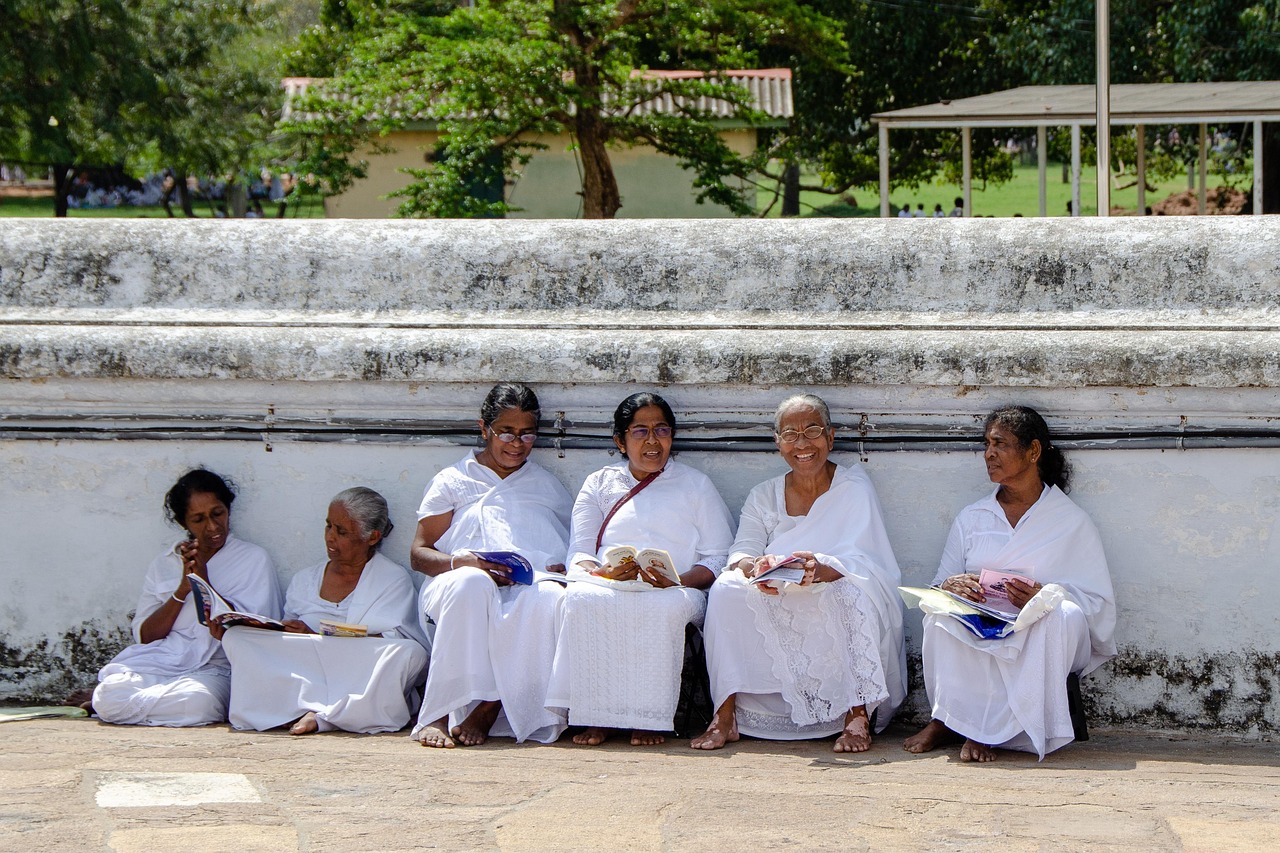
With the scent of incense wafting through festively decorated temples and the faint sound of prayers ringing out in the morning silence, a window opens into Thailand's spiritual soul. Buddhist holidays shape the rhythm of life in this country, where faith is not just a personal belief, but a unifying element of society. In addition to the festivals already mentioned, such as Visakha Bucha, there are other significant occasions that deeply impact the everyday lives of Thai people and reflect their values of compassion and mindfulness. Let's take a look at these holy days and explore their influence on the Thai community.
One of the central holidays is Makha Puja, which is celebrated on the full moon of the third lunar month, usually in February - in 2025 on February 12th. This day commemorates a historic event in which 1,250 enlightened disciples of Buddha spontaneously gathered to hear his teachings. Devotees mark the occasion by visiting temples and making offerings of flowers, candles and incense sticks. Particularly impressive are the light processions, in which people walk around the temple three times to honor the three jewels of Buddhism - Buddha, Dharma and Sangha. These ceremonies promote a sense of unity and moral reflection as they emphasize the principles of avoiding injustice, doing good, and purifying the mind. Makha Puja offers a moment of reflection in the midst of everyday life and strengthens communal values in Thai society.
Equally significant is Asalha Puja, which is celebrated on the full moon of the eighth lunar month, usually in July - in 2025 on July 10th. This holiday commemorates the Buddha's first sermon in which he proclaimed the "Four Noble Truths" that form the core of the Buddhist path. On this day, recognized as a public holiday, many gather in temples to take part in religious ceremonies, make offerings and listen to sermons. The celebrations invite people to deepen their understanding of the Dharma and remind people of the importance of mindfulness and compassion. The impact on society is evident in the quiet, contemplative atmosphere that prevails on this day and in the strengthening of the spiritual bond between individuals and their community.
Another prominent occasion is Khao Phansa, which begins the day after Asalha Puja - July 21 in 2025 - and marks the beginning of the three-month Buddhist fasting period. During this time, monks retreat to their monasteries to devote themselves intensively to meditation and study. Devotees support them by bringing candles, donations and other necessities to the temples, which is considered an act of collecting merit. This holiday, often associated with the end of the rainy season, reflects the close connection between monastic life and the lay community. It promotes a sense of responsibility and support within society, as many families use this time to deepen their spiritual practices and pay respect to the monks.
These Buddhist holidays have a profound impact on the social fabric of Thailand. They are not only opportunities for personal reflection, but also for family gatherings and community rituals that strengthen cohesion. Temples and streets shine with festive decorations, while traditional clothing and the making of offerings underline cultural identity. On such days, when there is often a ban on the sale of alcohol, the seriousness of the spiritual practice that permeates everyday life becomes clear. Visitors are welcome to take part in the ceremonies and experience first hand the deep spirituality and warmth of Thai culture, as seen on platforms such as Thai23 is clearly described where the meaning of these holidays is vividly conveyed.
The influence of these occasions is also evident in the way they shape the annual rhythm, often coinciding with seasonal turning points such as the end of the rainy or dry seasons. They offer orientation and structure in a fast-moving world and remind people to pause and reflect on their values. The Buddhist holidays are therefore an indispensable part of social life in Thailand, maintaining the balance between tradition and everyday life.
Influence of regional traditions
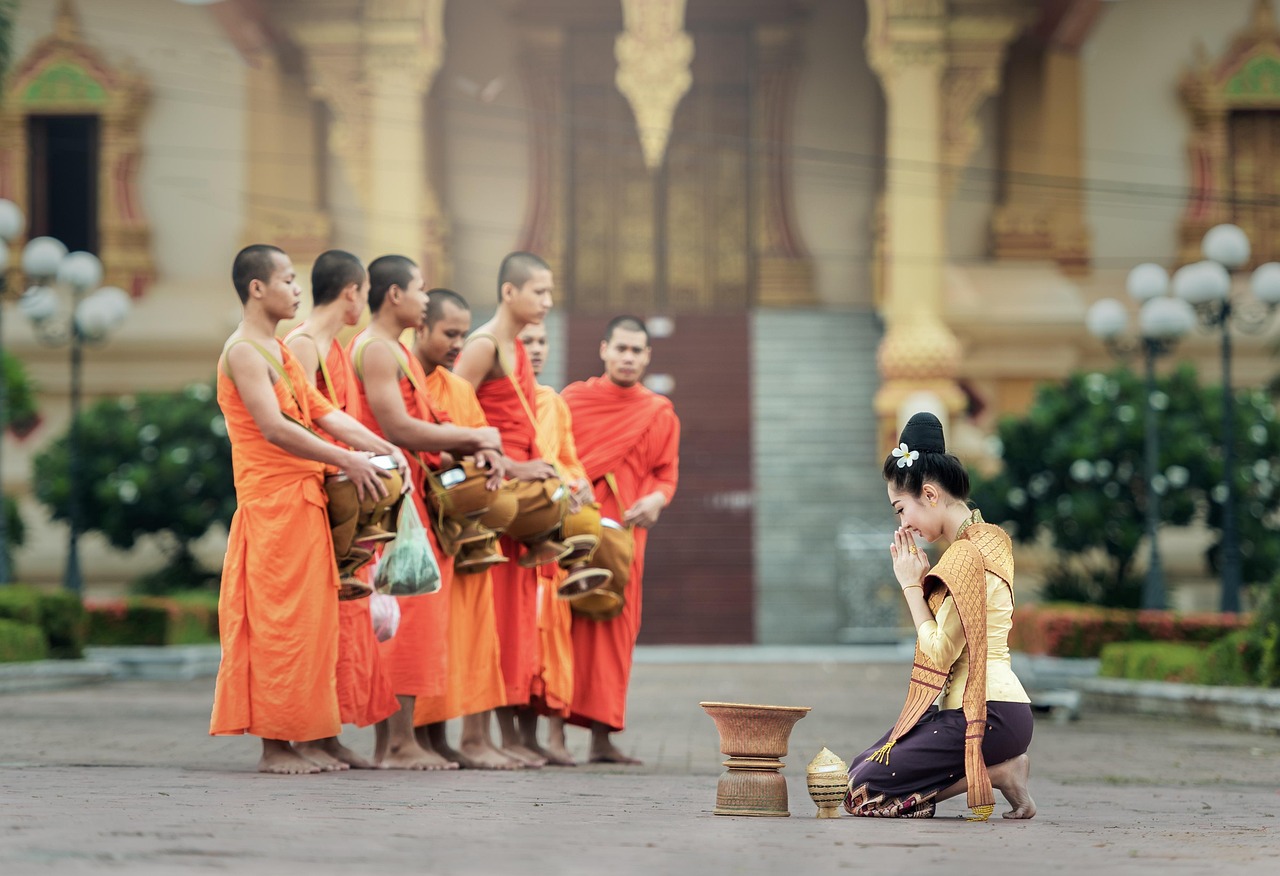
Between the rolling hills of the north and the palm-fringed beaches of the south, Thailand pulsates to the beat of its diverse regional customs, which add a distinctive touch to the national celebrations. While festivals like Songkran or Loi Krathong are celebrated nationwide, local traditions bring a wealth of colors, sounds and flavors to these communal occasions. This cultural diversity, which varies from region to region, weaves a rich tapestry of identities that enriches the essence of the Thai community. Let's delve into the ways these local peculiarities shape and deepen the country's major celebrations.
In northern Thailand, especially in Chiang Mai, the Loi Krathong festival is complemented by the tradition of Yi Peng, in which thousands of sky lanterns rise into the night sky. This regional ritual, which often coincides with the floating of krathong boats, adds a magical dimension to the nationwide festival that is deeply rooted in local beliefs. The lanterns that carry wishes and prayers symbolize letting go of misfortune and striving for a better life. This practice, which is practiced primarily in the northern provinces, creates an atmosphere of contemplation and hope that adds a spiritual level to the national festival and captivates visitors from all over the world.
In the northeast of the country, in the Isaan region, the Bun Bang Fai Rocket Festival brings an explosive energy to the annual cycle that stands out from other national celebrations. This local festival, celebrated in May, honors the rain god Phraya Thaen and requests a fruitful rainy season. Homemade rockets are launched into the sky, accompanied by colorful parades, traditional music and dances. While Songkran, a New Year celebration, represents renewal across the country, Bun Bang Fai adds an agrarian perspective that underscores rural communities' deep connection to nature. Such regional customs enrich national celebrations by highlighting the importance of harvests and livelihoods.
Another fascinating regional tradition is the Phi Ta Khon Ghost Festival in Loei Province, which takes place between March and July. While it is part of the Buddhist Bun Luang celebration, it has a unique local character with colorful masks and costumes made from recycled materials. Locals dress up as ghosts and parade through the streets to honor ancient legends and protect the community from harm. These vibrant customs complement national Buddhist holidays such as Visakha Bucha or Asalha Puja by adding a playful, folkloric dimension that combines spiritual seriousness with joy and creativity.
In the south of Thailand, especially in Phuket, the Vegetarian Festival shapes the national festival landscape with its intense rituals and culinary specialties. While it is known nationwide as the Festival of the Nine Emperor Gods, the processions of Ma Song - spiritual mediums who perform extreme acts of self-mortification - and strict adherence to the "Jay" diet are particularly prominent in Phuket. These regional characteristics give the festival a dramatic intensity that stands out from the quieter Buddhist celebrations in other parts of the country. They reflect the Sino-Thai culture of the region and enrich the national celebration culture with their unique blend of Taoist and local elements.
The culinary traditions that accompany regional customs also contribute to the diversity of national festivals. While Songkran is celebrated nationwide with family gatherings and traditional foods, local markets in Isaan offer dishes like sticky rice and spicy salads that reflect the region's robust cuisine. In Chiang Mai, sweet treats and northern Thai specialties enrich the festive tables during Yi Peng. These culinary differences, often based on regional ingredients and cooking styles, add an additional layer of flavor to the celebrations, highlighting Thailand's cultural diversity, as in reports on regional traditions in other countries, such as German blog, where similar cultural diversity is described.
The local customs and festivals in Thailand are therefore much more than just regional peculiarities - they are the heart that gives the national celebrations depth and character. They reflect the history, environment and cultural influences of each region, creating a mosaic of traditions that express Thai identity in all its facets.
The role of music and dance
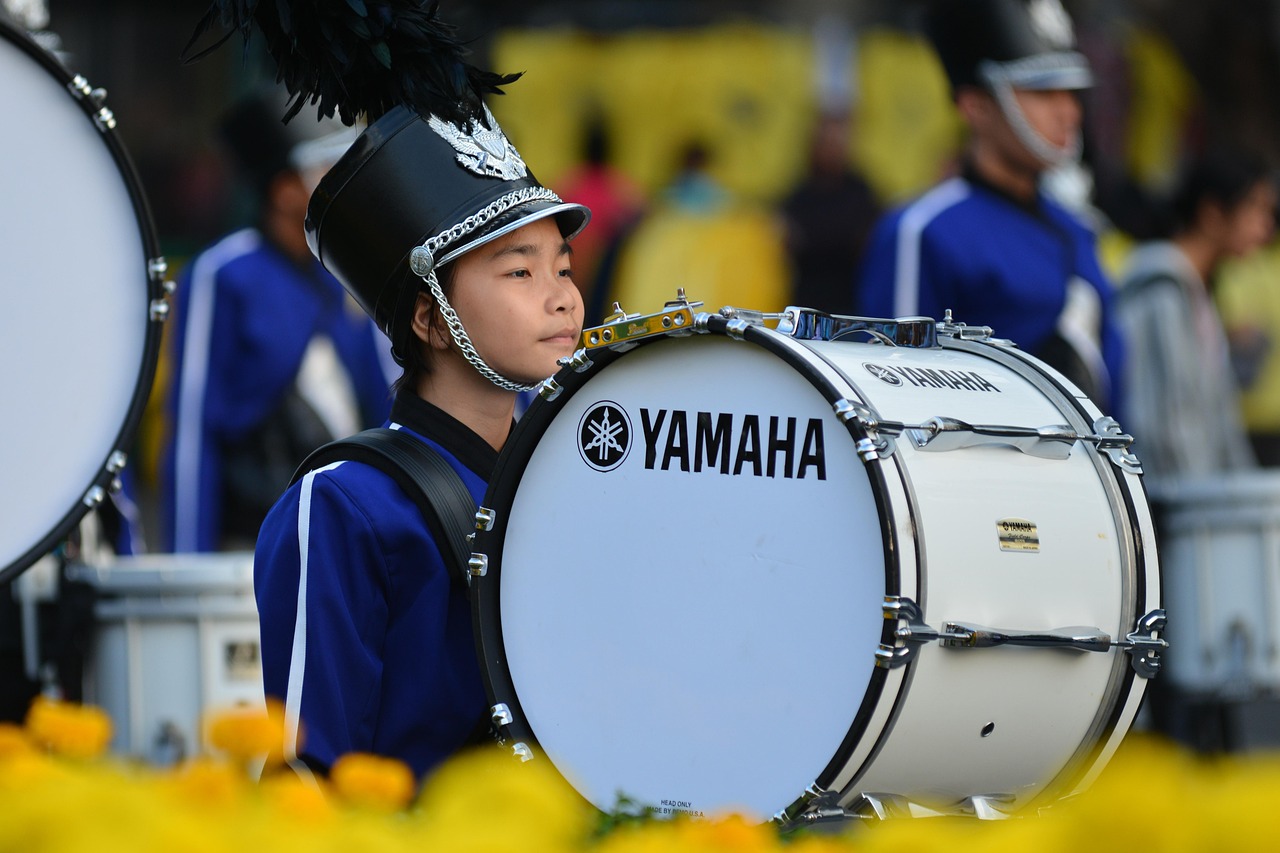
As the drums sound and elaborate costumes shimmer in the light of torches, the streets and temples of Thailand are transformed into living stages on which the soul of the nation is expressed. During the traditional festivals, cultural performances unfold that not only entertain, but also tell stories, convey values and unite the community. From graceful dances to powerful rituals, these performances are a window into the country's rich history and spiritual depth. Join us on a journey through the diverse artistic expressions that make Thailand's celebrations unforgettable experiences.
One of the most impressive performances takes place during the Phi Ta Khon Ghost Festival in Loei Province, celebrated between March and July. Here the streets are transformed into a colorful spectacle as locals parade through the villages dressed as ghosts in elaborate masks and costumes made from recycled materials. These parades, accompanied by rhythmic music and lively dances, honor ancient legends and are intended to celebrate the return of Buddha from heaven. The dancers' movements, often improvised and full of energy, reflect a playful lightness that is nevertheless deeply rooted in folkloric beliefs. Such performances give the festival a unique regional flavor and captivate both locals and visitors.
During the Loi Krathong Festival, celebrated under the full moon in November, traditional dances and music enrich the celebrations, especially in Chiang Mai, where the Yi Peng Festival takes place at the same time. Dancers in elegant, flowing robes perform graceful movements that often tell stories of nature and gratitude, while musicians create a melancholic atmosphere with traditional instruments such as the khim (a type of zither) or the saw (a two-stringed fiddle). These performances, often seen at parades or temple ceremonies, add to the emotional depth of the festival, which symbolizes letting go of worries and worshiping the water goddess Khongkha. They invite the audience to connect with the spiritual message of the occasion.
Another highlight are the powerful performances during the Phuket Vegetarian Festival, which takes place in the ninth lunar month. The focus here is on the “Ma Song” – spiritual mediums – who, in a trance state, perform extreme rituals such as piercing their bodies with needles or walking over glowing coals. These performances, accompanied by deafening fireworks and the sound of drums, are not mere entertainment, but an expression of deep devotion to the Nine Imperial Gods. They attract thousands of spectators who feel the intensity and spiritual fervor of the participants. Such rituals, often perceived as performances, illustrate the connection between faith and physical expression in Thai culture.
During national celebrations such as Songkran, the Thai New Year in April, regional dances and music add to the festive atmosphere. In many cities, especially Chiang Mai, traditional Lanna dances are performed, in which dancers in colorful costumes perform synchronized movements to the sounds of drums and flutes. These performances, often part of processions or street festivals, tell of the region's history and traditions and add to the nationwide joy of the new beginning that Songkran symbolizes. They promote a sense of community and invite both locals and tourists to participate, whether by clapping along or spontaneously dancing along.
Buddhist holidays like Makha Puja or Asalha Puja offer a different kind of cultural performance that is more contemplative than boisterous. During these occasions, monks often perform ceremonies accompanied by chants and recitations of ancient Buddhist texts. These musical elements, supported by the sound of temple bells, create a meditative atmosphere that underlines the spiritual significance of the day. In some regions, dramatic depictions of the life of Buddha are also performed, conveying the teachings and values of Buddhism as a form of religious theater. Such performances, often co-created by laypeople and monks, are a powerful means of keeping the message of faith alive, as can be seen in other cultures with folkloric performances.
The cultural performances during Thai festivals reflect the diversity and depth of national identity. They connect past and present by presenting ancient stories and values in lively, often engaging forms that inspire and engage audiences.
Festivals and their economic importance
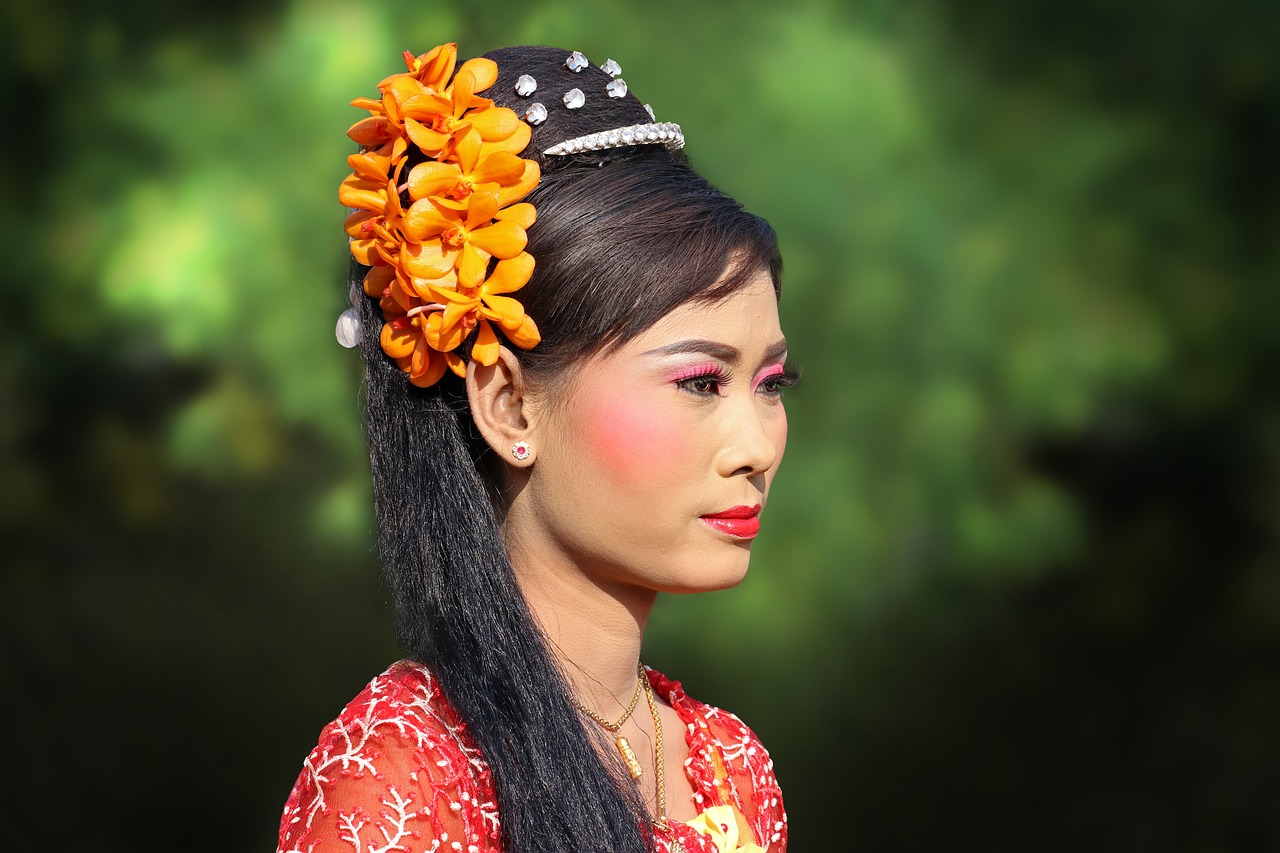
Across Thailand, from the bustling streets of Bangkok to the quiet villages of Isaan, traditional festivals transform the landscape into a vibrant gathering place for locals and travelers alike. These celebrations are not only cultural highlights, but also powerful drivers of tourism and local economies, generating revenue and strengthening communities. Behind the colorful parades and spiritual rituals lies a significant financial impact, creating jobs and boosting trade. Let's take a closer look at the economic impact of these festive occasions and understand how they shape life in Thailand.
One of the most prominent examples is Songkran, the Thai New Year, celebrated in April. As one of the most famous festivals in the world, it attracts millions of international tourists every year to take part in the exuberant water fights in cities such as Bangkok, Chiang Mai and Phuket. This influx of visitors results in a huge increase in revenue for the tourism industry, including hotels, restaurants and tour operators. Local businesses, from street vendors selling water guns and snacks to small guesthouses, are directly benefiting from the increased demand. According to reports, Songkran generates billions of baht in revenue, underscoring the importance of such festivals to the national economy and supporting jobs in the service industry.
Equally impressive are the economic effects of Loi Krathong, the festival of lights in November, which is particularly celebrated in tourist hotspots such as Chiang Mai and Sukhothai. The event attracts visitors with its scenic lanterns and floating krathongs, resulting in a significant increase in bookings for accommodation and tours. In Sukhothai, for example, the 2025 festival attracted over 750,000 tourists and generated revenue of about 800 million baht, local reports show. Artisans making krathongs from banana leaves and sellers of lanterns and souvenirs experience a boom during this period, bolstering their livelihoods. Such festivals not only promote tourism but also support traditional crafts and local markets.
The Phuket Vegetarian Festival, held in the ninth lunar month, offers another perspective on the economic impact. With its intense rituals and unique Sino-Thai culture, it attracts a special group of tourists interested in the processions and spiritual performances. Hotels in Phuket Town, such as Baan Suwantawe or The Memory at On On Hotel, record high occupancy rates during this period, while restaurants and street stalls benefit from demand for vegetarian and vegan dishes. The influx of visitors stimulates local commerce and creates seasonal jobs, particularly for cooks, guides and salespeople. This dynamic shows how cultural festivals can specifically serve niches in tourism and thus stimulate the regional economy.
Smaller regional festivals such as the Bun Bang Fai Rocket Festival in northeastern Thailand also contribute to the local economy, albeit on a smaller scale. In Yasothon, where this festival is celebrated in May, visitors from surrounding provinces flock to witness the impressive rocket launches and colorful parades. Local entrepreneurs sell traditional food, drinks and souvenirs, while the community benefits from revenue from entry fees and competition prizes. Such events, although less known internationally, promote domestic tourism and support the rural economy by generating income for families and small businesses.
The economic impact of these festivals goes beyond immediate sales and has a long-term impact on Thailand's infrastructure and image as a travel destination. The government and local authorities often invest in the organization and security of such events, resulting in improved roads, public facilities and services. At the same time, global media reports and social networks covering festivals such as Songkran or Loi Krathong reinforce Thailand's brand image as a culturally rich and hospitable country.
The financial stimulus that comes from these celebrations is living proof of how deep-rooted traditions can influence modern economic structures. They create a symbiosis between cultural heritage and economic progress, which has a lasting impact on both tourism and local livelihoods.
Traditions over time
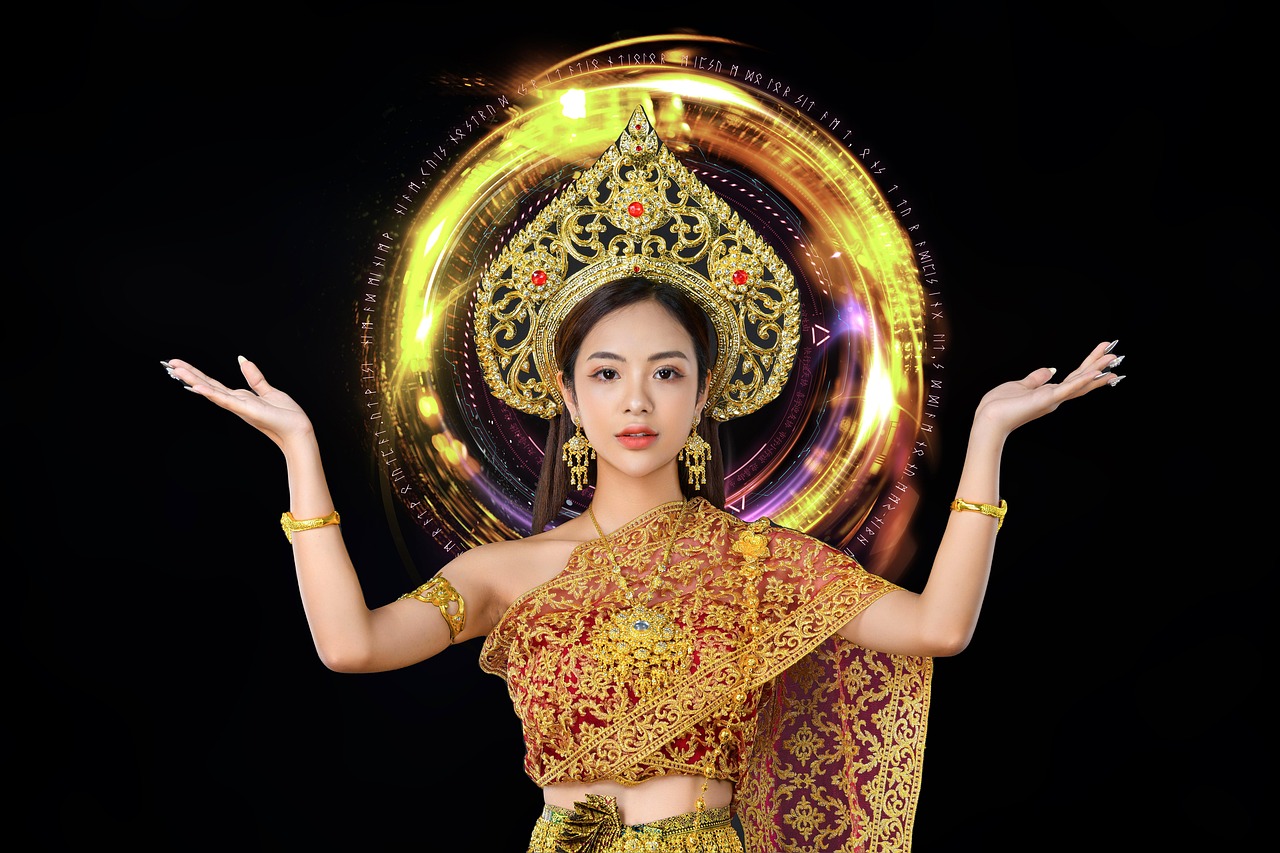
Amid the digital age, where smartphones light up the streets and social media connects the world, Thailand's ancient festivals are finding their way into the modern age without losing their roots. The traditional celebrations, once passed down from village to village, are adapting to the currents of today's society by incorporating new technologies, global influences and changing lifestyles. This shift shows how deeply rooted customs can endure in a changing world while maintaining their cultural essence. Let's explore how these centuries-old rituals are reinventing themselves in the 21st century.
A striking example of this development is Songkran, the Thai New Year celebration in April, which traditionally stands for purification and respect. While the focus used to be on pouring water over elders and Buddha statues, the festival has become a global event in urban centers like Bangkok, with massive water fights shared worldwide on social media. Modern elements such as plastic water guns and organized street parties with DJs and neon lights complement the traditional rituals. This adaptation not only attracts younger generations, but also international tourists who follow and share the festival live via platforms such as Instagram, expanding the cultural reach without losing the essence of renewal.
Loi Krathong, the November festival of lights, has also undergone a modern transformation, particularly in terms of environmental awareness. Traditionally, krathongs were made from banana leaves, but in the past many turned to Styrofoam, which caused significant environmental problems. Today, local authorities and activists are promoting biodegradable materials, and some cities are even using digital krathongs, or LED lights, to protect waterways. In Chiang Mai, where the Yi Peng Festival is celebrated with sky lanterns, there are increasing restrictions and safety precautions to prevent fires, while virtual lantern launches on social media or apps are being offered as an alternative. This modernization shows how traditions can be adapted to contemporary challenges.
Phuket's Vegetarian Festival, held in the ninth lunar month, also reflects the influence of globalization. While the spiritual rituals of the Ma Song and the strict “Jay” diet remain central, the festival has become an international spectacle, garnering global attention through live streams and documentaries. Restaurants and street stalls now offer not only traditional vegan dishes, but also modern interpretations aimed at global tastes, such as vegan burgers or smoothies, to appeal to tourists. This adaptation preserves the religious significance of the festival while opening it up to a wider audience and promoting cultural exchange.
Buddhist holidays such as Visakha Bucha or Asalha Puja, which are traditionally characterized by temple visits and silent meditation, are also experiencing a gentle modernization. In urban areas, temples and communities are using digital platforms to livestream ceremonies so that people who cannot be physically present can still participate. Younger generations, often caught up in hectic daily lives, are finding access to these spiritual practices through apps and online meditations. These technological tools make it possible to preserve the essence of the holidays – reflection and mindfulness – in a modern context, while opening up new ways to participate.
Regional festivals such as the Bun Bang Fai Rocket Festival in Yasothon also show how tradition and modernity can go hand in hand. While the handmade rockets and requests for rain remain the focus, events are now often enhanced with contemporary elements such as competition prizes, social media advertising and tourist offers. Such adaptations attract not only local communities but also visitors from other regions, thereby increasing the festival's visibility. The balance between preserving old customs and integrating modern approaches is particularly clear here, as can also be seen in discussions about the evolution of traditions in other cultures.
The changes and modernizations of traditional festivals in Thailand reflect the dynamic spirit of a society that honors its past while facing the challenges and opportunities of the present. This development shows how deeply rooted customs can not only survive but reinvent themselves to remain relevant in a globalized world.
Conclusion
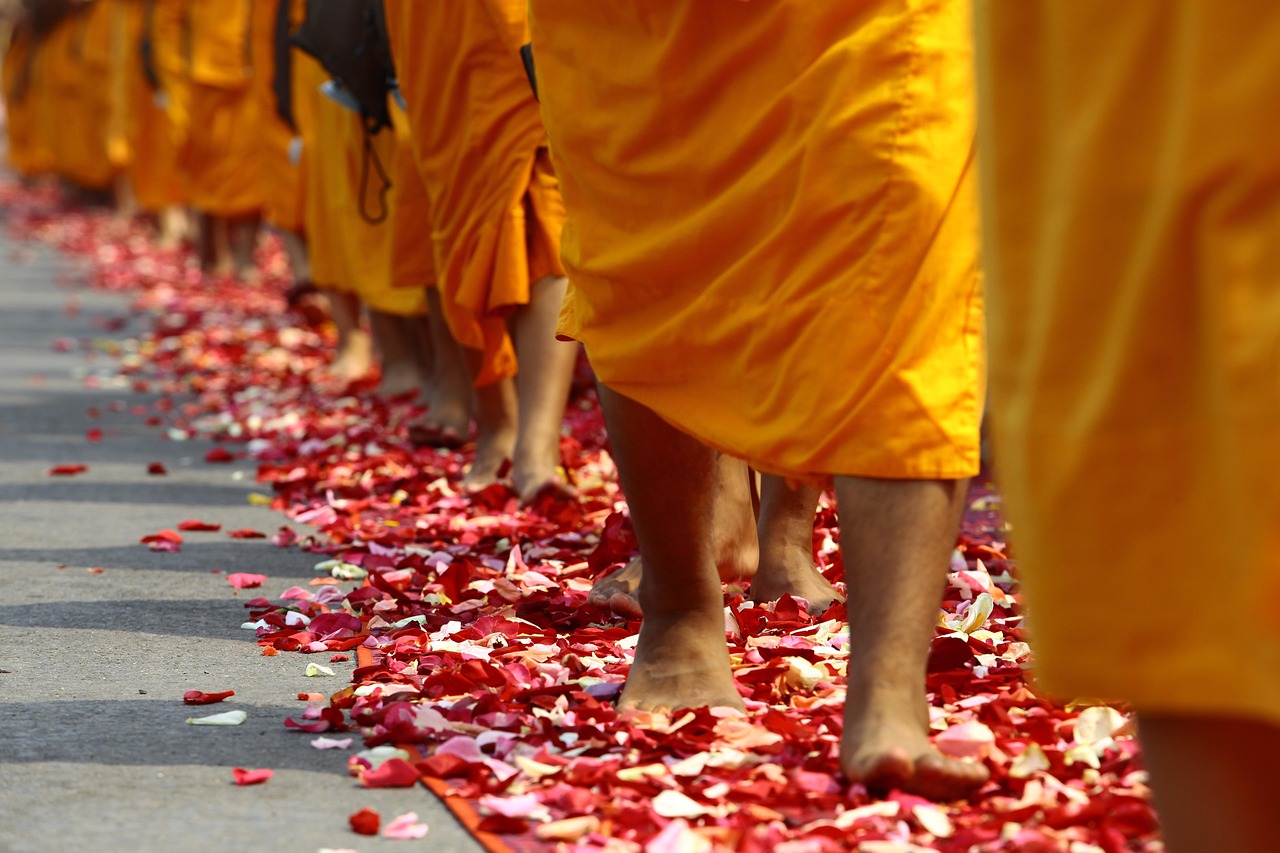
Imagine a nation where every beat of the drum, every laugh and every glowing krathong on the river tells a story of togetherness and faith - Thailand lives through its festivals, which are much more than just celebrations. These centuries-old traditions weave a tapestry of cultural values that shapes the essence of the country and connects its people. From the splashy water fights of Songkran to the silent prayers of Visakha Bucha, these occasions reflect the soul of a society that remains deeply rooted in its history and spirituality. Let's take a closer look at the cultural significance of these festivals and their formative influence on Thai identity.
The cultural significance of traditional festivals in Thailand is evident in their ability to promote community and togetherness. Celebrations such as Songkran, the April New Year festival, bring people of all ages and social classes together to experience purification and renewal through the symbolic pouring of water. These shared rituals strengthen family and neighborly bonds while instilling values of respect and harmony that are deeply rooted in everyday Thai life. Such celebrations create a space in which collective identity is celebrated and remind us of the importance of leaving old conflicts behind and looking into the future with fresh courage.
Equally significant is the spiritual dimension that permeates many of these occasions and shapes Thai identity. Buddhist holidays such as Visakha Bucha, Makha Puja or Asalha Puja are not only days of commemoration of the life of Buddha, but also opportunities for inner contemplation and moral reflection. Through temple visits, meditation, and offerings, people deepen their connection to the principles of compassion and mindfulness that are at the core of Theravada Buddhism. These spiritual practices shape a national identity that values humility and inner strength over material wealth, and provide a counterbalance to the often hectic demands of modern life.
The diversity of the festivals also reflects the cultural and regional complexity of Thailand, which makes the country a unique mosaic. While Loi Krathong expresses gratitude to nature with its floating lights, the Phuket Vegetarian Festival expresses Sino-Thai culture with intense rituals. Regional customs such as the Bun Bang Fai Rocket Festival in Yasothon or the Phi Ta Khon Ghost Festival in Loei add local stories and traditions that enrich national identity. This diversity shows how Thailand as a nation consists of a network of different influences, which are nevertheless united in a common cultural heritage, as described in general definitions of culture.
Another aspect that shapes Thai identity is the ability of festivals to connect past and present. They serve as a living reminder of historical events, spiritual values and ancestral ways of life while adapting to modern realities. Songkran may now be celebrated with water guns and street parties, but the essence of purification remains. This continuity strengthens awareness of one's own history and creates a sense of belonging that connects people across generations. Festivals are therefore not only annual events, but also carriers of a collective memory that shapes the Thai soul.
Sources
- https://faszination-suedostasien.de/thailand-kultur-und-lebensweise/
- https://en.wikipedia.org/wiki/Culture_of_Thailand
- https://thailand-magazin.de/asien-urlaub/thailand-urlaub/traditionelle-feste-in-thailand/
- https://ling-app.com/de/th/feste-in-thailand
- https://en.wikipedia.org/wiki/Songkran_(Thailand)
- https://www.bbc.com/travel/article/20250411-songkran-the-worlds-biggest-water-fight
- https://en.wikipedia.org/wiki/Loy_Krathong
- https://www.bangkokpost.com/thailand/politics/2688154/loy-krathong-festival-to-draw-750-000-tourists-to-sukothai-dpm-somsak
- https://en.m.wikipedia.org/wiki/Vesak
- https://www.chiangmaitravelhub.com/events/visakha-bucha-day/
- https://en.wikipedia.org/wiki/Chakrata
- https://traveltriangle.com/blog/things-to-do-in-chakrata/
- https://abenteuerglobus.com/phuket-vegetarian-festival/
- https://heyroseanne.com/thailand-vegetarian-festival/
- https://www.globalhighlights.de/thailand/guide/feste/
- https://thai23.com/buddhistische-feiertage/
- https://www.deutsch-blog.com/regionale-braeuche-in-deutschland-traditionen-die-von-bundesland-zu-bundesland-variieren/
- https://www.wissen.de/deutsche-traditionen-und-wo-sie-gelebt-werden
- https://nyuskirball.org/events/tanz/
- https://starclinch.com/de/blog/book-regional-folk-artists/
- https://en.wikipedia.org/wiki/Feste
- https://www.duden.de/rechtschreibung/wirtschaftlich
- https://en.m.wikipedia.org/wiki/Tradition
- https://dict.leo.org/german-english/traditionen
- https://www.duden.de/rechtschreibung/Kultur
- https://de.wikipedia.org/wiki/Kultur

 Suche
Suche
 Mein Konto
Mein Konto
